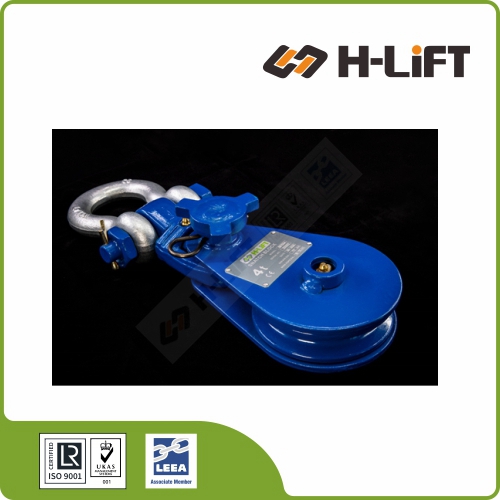ALWAYS:
• Store and handle lifting clamps correctly.
• Inspect lifting clamps and accessories before use and before placing into storage.
• Put the clamps onto the plate as far as they will go.
• Work within the angles and reeve in the manner for which the clamps are designed.
• Use two or more pairs of clamps in conjunction with a spreader if the plate to be lifted is likely to sag longitudinally.
• Take great care to ensure the plate is fully supported before attempting to release the clamps.
NEVER:
• Use less than two horizontal lifting clamps to lift a plate.
• Change the method of reeve.
• Exceed the maximum thickness for which the clamps are designed.
• Attempt to rotate from the horizontal to the vertical or vice versa.
• Obliquely load horizontal lifting clamps unless they have been designed for that purpose.
• Force or wedge a hook or other fitting into the eye of the clamp.
Selecting the Correct Lifting Clamp
Horizontal lifting clamps are available in a range of capacities and designs. They may utilise a cam to grip the plate or have a plain toe and rely only on friction to hold the plate. They are intended to be used in pairs with a common sling. Select the lifting clamp to be used and plan the lift taking the following into account:
Type of clamp - plain toe or cam.
Capacity and plate thickness.
Type of sling.
WARNING: Some of these clamps are designed to be used with an endless loop of chain whilst other are for use with a two leg sling. Under no circumstances must an endless loop be substituted for a two leg sling or vice versa as this will alter the geometry and therefore the gripping forces on which the clamps rely for their safe operation.
Storing and Handling Lifting Clamps
Never return damaged or contaminated lifting clamps to storage. They should be dry, clean and protected from
corrosion.
Lifting clamps should not be dropped or thrown down.
Using Lifting Clamps Safely
Do not use defective lifting clamps or accessories.
Always use horizontal lifting clamps in pairs attached to the correct type, size and length sling for which they are designed.
Position the clamps correctly. Place the clamps over the centre of gravity of the plate. If the plate is long and has a tendency to bend use two or more pairs of clamps in conjunction with a spreader beam, equally disposed about the centre of gravity, to minimise the sag. Ensure the clamps face each other to balance the horizontal clamping forces.
If the plates are likely to sag transversely, clamps which grip the plate by a cam must be used.
Care must be taken to ensure no one clamp takes more than its SWL.
Put the clamps onto the plate as far as they will go.
Do not use clamps at an angle to the edge of the plate unless they are designed for the purpose.
In-service Inspection and Maintenance
Horizontal lifting clamps should be cleaned and any moving parts lubricated at appropriate intervals, unless the suppliers specific instructions indicate otherwise.
Regularly inspect the lifting clamp and, in the event of the following defects, refer the clamp to a Competent Person for thorough examination: wear; damage or distortion to fixed and moving jaws; frame opening out; cracked, insecure, worn or bent pins, bolts etc; corrosion; illegible markings.
WARNING: Teeth of jaws must not be re-sharpened or re-cut unless this has been specifically approved by the maker.









